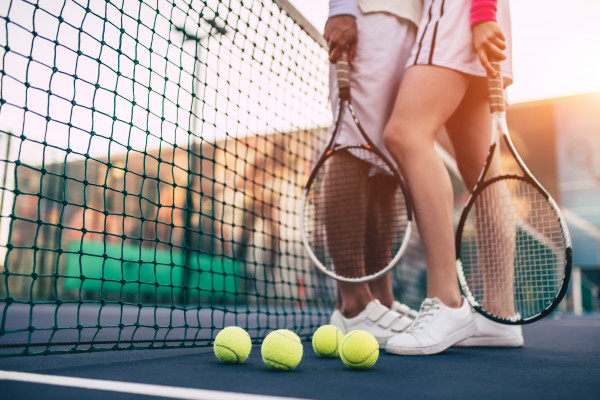Buying tennis balls only at first glance may seem quite simple. Wide range of products makes choosing a difficult task.
In the basic classification we may distinguish three ball categories: junior, pressureless (non-pressurized) and pressurized. The first ones are aimed towards the youngest tennis players. The other two are so called regular games category.
Pressurized balls
These balls are much softer than non-pressurized balls, which improves the comfort of the game. Their construction, namely the drop in pressure inside the balls, affects their lower durability. Opened pressure balls left for about two weeks (even unused) are not suitable for the game. Pro players exchange balls on average every 9 games. Each brand of ball makers produces three classes of balls, balls for professional level, master level and recreational level. Professional tennis balls are characterized by the highest quality offered by each manufacturer, these are balls used by professionals in ATP and WTA events.

When buying professional balls, you may expect excellent performance and durability. Pressure tennis balls at the master level are certainly enough for most league matches, while recreational balls are mainly treated as training balls, insert to coaching tubes or ball machines and they are not allowed in competitions in many leagues. Among them we may distinguish extra duty (designed for hard courts, with greater strength), regular (for playing on dust and indoors), high altitude (for playing at higher geographical heights) and HydroGuard (balls more resistant to moisture).
Pressureless balls
Filled with thick rubber. Pressureless balls are very durable, what is a result of its construction, however, makes them harder and heavier. This is noticeable during the game, when compared to pressured balls. Nevertheless, they are good choice for trainings and for players who play occasionally. They are sold separately and in bags.
Tennis balls for adults are sold in cans of 3 or 4 balls per can. Due to the high consumption of tennis balls, balls can be purchased in boxes. A box of tennis balls usually contains 18 cans (4 balls per can). Tennis balls for children are usually packed in bags or buckets, making them easier to transport and carry on the court.
Other types of tennis balls
In addition to typical tennis balls, manufacturers also produce autograph tennis balls. As you can easily guess, these are specially manufactured balls whose purpose in this case is to collect autographs. Autograph tennis balls are much larger than a normal ball, their diameter can be 13 or even 23 centimetres. They are mainly produced in the traditional yellow colour, but there are also pink versions. Another ball we may come across is a tennis ball on a rubber band. This type of ball is attached to a heavy base and allows you to practice without a tennis partner. With such a ball, you can improve your fitness and stroke technique at any time without going out on the court.

What to do with old, used balls?
In the age of recycling and ensuring that individual products are used for as long as possible, there is also the question of how to deal with old, used balls. Are they suitable only for throwing away? It turns out that they are not! We can use an old, used ball in several ways. If you have a dog, a tennis ball can be used as a toy. The ball can also be used as a massage tool, which everyone can already benefit from. However, other ways of dealing with old balls are becoming increasingly popular and, interestingly enough, you don't necessarily have to be a tennis fan to find a tennis ball useful. As it turns out, the ball can be successfully used when washing down jackets or duvets. Their filling often lumps together due to contact with water. However, if you throw a few tennis balls into the drum of the washing machine, you can avoid this problem in a great way, as the balls will bump against other objects in the washing machine, preventing the formation of lumps. Summary of ways to use old balls:
• tennis ball for a dog as a toy,
• tennis ball as a massage tool,
• tennis ball for washing - this use avoids the fluff clumping into lumps,
• tennis ball as a hammer - when hammering a nail into a delicate material, this avoids damaging it,
• tennis ball for mending socks - by inserting the tennis ball inside the sock, we avoid a possible needle prick.





















